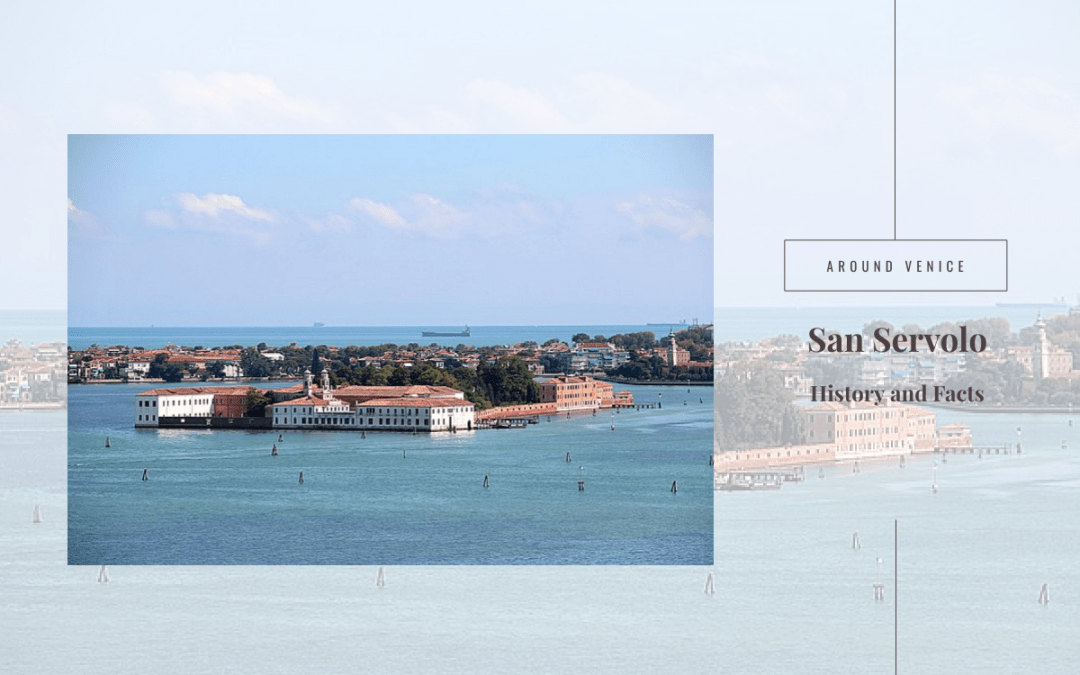Where the Island of San Servolo is located?
The Island of San Servolo is a small strip of land in the Venetian lagoon near the historic centre of Venice, located at the meeting point of the San Nicolò Canal and the Lazzaretto Canal, west of Lido and south of Sant’Elena.
Just a few minutes by vaporetto from Piazza San Marco, this enchanting place immediately captures the spirit of visitors, who are captivated by its unique atmosphere that also flows from the conservative restoration work carried out by the City of Venice.
Accordingly, the island’s interesting architectural, historical and cultural heritage has become accessible and functional for national and international tourism.
The ancient Benedictine Monastery, the Hospital and the Asylum have all been restored to their original splendour, making this one of the most popular locations in Venice.
History of the Island of San Servolo
The earliest records of the island of San Servolo date back to the year 819, when its monastery was already active due to the arrival of Benedictine monks, who arrived on the island towards the end of the 7th century to escape the invasion of the Franks.
With its strategic location along the main waterway leading to Rialto, the island maintained a role of primary importance for the metropolitan city of Venice.
Around 1100, a few groups of Benedictine nuns arrived and were settled for a few decades, until they were forced to move to the city in 1615 due to the progressive decay and neglect of the buildings.
From 1715, the island was used as a location for the first mentally ill patients who were housed at the large Military Hospital run by lay staff.
After the unification of the Kingdom of Italy, the Asylum came under the control of Venice, though it remained active to treat military and civil patients.
This facility remained in operation until the passing of the Basaglia Law (1978), when all psychiatric hospitals were closed.
The Island of San Servolo today
Since the 1990s, numerous conservation works were carried out on the buildings on the island, until 2004, when an important Multicultural Promotion Centre was established, which is now run on the island by the Venetian administration to organise artistic events, exhibitions and festivals of great appeal.
Since 2008 there has also been a branch of the Academy of Fine Arts, and since 2012 there has been a branch of the Cà Foscari International College.
Thanks to the San Servolo Foundation, studies on social and cultural marginalisation have been conducted, a unique structure (throughout the country) for the type of activities it proposes.
A branch of the Venice International University is also located here, set up with innovative methods that foster interpersonal relationships between students and teachers.
Covering an area of almost 5 hectares, the island has become a meeting point for the international cultural and university community, who organise high-level congresses and meetings here, thanks also to the spectacular environmental and natural setting.
A conference centre, a training centre and an ideal location for an unforgettable stay, the Island of San Servolo offers the opportunity to visit the interesting Museum of the Asylum (opened in 2008), the ancient Pharmacy (Spezieria di San Servolo), the Church rich in works of art of considerable artistic value and the Park (one of the largest in Venice) that hosts some permanent installations by important contemporary sculptors.
How to get to San Servolo?
The Island of San Servolo is located in the historic centre of Venice, right in front of Piazza San Marco, and can be easily reached by vaporetto (line 20) departing every 20-30 minutes from the San Zaccaria pier (journey time about 10 minutes).
There are also numerous waterbuses departing from Santa Lucia station (line 1, line 2, line 4, line 5) and line 2 operates from the Tronchetto car park.
For those arriving by air, it is recommended to travel to the city with the bus line that the ATVO transport company dedicates to the airports of Venice and Treviso, as well as all the routes that connect the Venetian capital with many other locations in the eastern Veneto region




